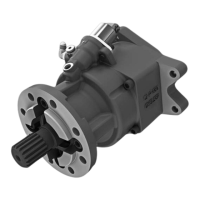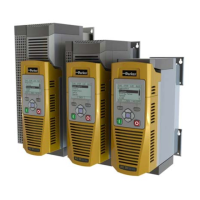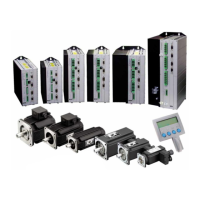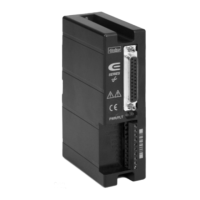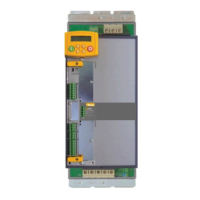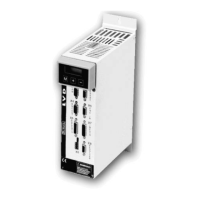D-92 Programming
DC590+ Series DC Digital Drive
Integral Gain
Integral eliminates steady-state error. Reducing INT. TIME CONST. improves the response, however, if it is set too short it will cause instability. The
integral value is clamped internally by the settings of POSITIVE LIMIT and NEGATIVE LIMIT. It is also held at the last value when the PID
CLAMPED output is TRUE. Setting INT. DEFEAT to ON will disable the integral gain term.
Derivative Gain
Derivative gain instantaneously boosts the PID output signal. Increasing DERIVATIVE TC decreases the damping, which in most cases causes
overshoot and oscillations resulting in an unacceptable system response.
NOTE For most applications, derivative gain is never used and is usually left at its default value of 0.000 seconds.
Derivative gain can improve response in some dancer tension controlled systems, particularly those systems with high inertia dancers which need an
instantaneous response to overcome the weight of the dancer roll. For loadcell controlled tension systems, derivative gain is almost never used.
• In underdamped systems, the output oscillates and the settling time increases.
• Critically damped systems have no overshoot or oscillations. They reach the setpoint within the desired response time.
• Overdamped systems do not oscillate but do not reach the setpoint within the desired response time.
NOTE The EMULATE 590P parameter in the CONFIGURE DRIVE function block affects the time constants used in the PID. If this parameter is
non-zero, the filter, integral and derivative time constants used within the PID are four times greater than those shown on the input
parameters. This emulates the behaviour of earlier versions of the 590P. Refer to “Execution Rules”, D-2.
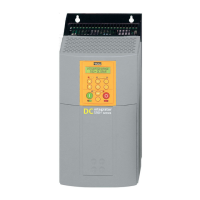
